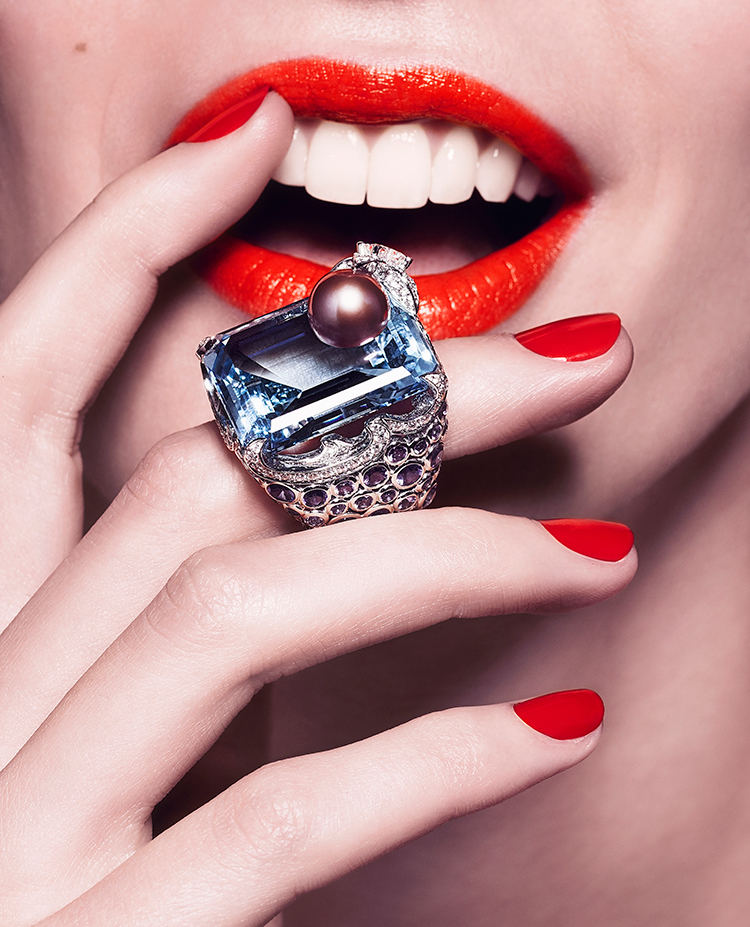When it comes to ageing concerns, our skin gets most of the attention, but there’s nothing more youthful than a straight, white smile. We reveal the latest techniques and treatments to transform your teeth and take years off your appearance.
Smile and the world smiles with you, or so the saying goes, but what if your teeth are more cause for grimace than grin? They may be made of the hardest substance in the human body, enamel, but our teeth age just like the rest of our anatomy and years of chewing and grinding, eating acidic foods and drinking coffee and wine can leave us with stained, worn teeth that add years to our appearance. There’s little sense then, in spending hundreds of dollars on facials, serums and creams to keep our complexions youthful if our smiles undo all the good work. So, aside from brushing and flossing daily, how can we achieve a healthy, youthful-looking smile?
Technology has dramatically changed the health and beauty industry over the past few decades and it is also changing the face of dentistry, transforming the range and reach of techniques on offer. Straightening your teeth no longer requires brackets and wires, Botox is being used to stop destructive grinding and enhance smiles, and complex restorative treatments can be carried out with precise, painless lasers instead of drills.
Here, four experts reveal the latest treatments on offer to help you anti-age your smile.
STRAIGHTEN
We may associate straightening teeth with adolescents wearing braces but did you know that your teeth can become more crooked with age, because they tend to drift forward over time? You might have had braces when you were younger but now find your teeth have shifted out of alignment. Well, it’s never too late to regain the straight smile of your youth, says specialist orthodontist Dr Ross Anning of Auckland City Orthodontics. “Many adults feel they are too old to get their teeth straightened or don’t want to wear traditional metal braces but with the latest techniques, like Invisalign and Incognito, they can straighten their teeth without anyone even knowing.”
Dr Anning says Invisalign – which uses virtually invisible clear aligners to gently move teeth into place instead of brackets and wires – suits adults because the aligners can be removed for special occasions and the wearer can clean and floss their teeth as normal. Incognito, on the other hand, is a totally invisible straightening option in which gold brackets are placed on the inside of the teeth, where they are completely hidden from view. “This is a highly specialised technique which is becoming more popular as the trend for adult orthodontics grows,” says Dr Anning, who set up New Zealand’s first adult-focused orthodontic practice earlier this year.
Straightening teeth can take as little as six months and the time investment is well worth it. One of the benefits of straightening your teeth is the boost to your confidence, after all, what is more anti-ageing than an uninhibited smile? But Dr Anning says the straightening process can also have a positive impact on the shape of your face. “In many cases, straightening the teeth improves lip and facial support which can lead to a more youthful appearance,” he says.
A consultation is necessary before the most appropriate course of treatment can be decided on, says Dr Anning, who has straightened the teeth of people in their sixties, proving it’s never too late.
BOTOX
When you think of Botox and dermal fillers, you probably don’t immediately think of your dentist – but dentists are increasingly doing extra training to offer these types of youth-enhancing cosmetic treatments and they are perfectly placed to do it, says Dr Jeremy Bywater of Killarney Dental in Takapuna. “I made the decision to offer Botox and dermal filler because it fitted nicely with the other cosmetic treatments I was already offering and I’ve found I’m now able to offer patients a more complete cosmetic solution,” he says. “Dentists have an in-depth knowledge of facial anatomy and most dentists are skilled at painless injection techniques as we do this multiple times a day. This, of course, makes for a more relaxing experience for the patient.”
Dr Bywater has been providing treatment with Botox and Xeomin, another brand of Botulinum toxin, for three years and uses these muscle relaxants to treat both cosmetic issues and functional dental problems. People who suffer from overactive jaw muscles through clenching and grinding at night, for example, can be treated with a muscle relaxant to reduce headaches, pain in the face and wear and tear on fillings and teeth.
When it comes to using muscle relaxants to enhance a person’s appearance, Dr Bywater says Botox, often combined with dermal filler, can be used to improve the appearance and proportions of the lips, to smooth creases around the mouth, and even to reduce a “gummy smile”.
He adds that in the hands of a skilled practitioner, Botox treatment will not leave people looking ‘frozen’ and expressionless. “When done well it is a subtle treatment to smooth fine lines and can be used preventatively to stop lines during movement from becoming deep lines at rest,” he explains. “We commonly use it to improve the shape and symmetry of the eyebrows, to open the eyes, lift the corners of the mouth and define the jaw.”
In most cases, Botox treatment will need to be repeated every three months.
WHITEN
Years of drinking your morning flat white and that glass of pinot noir with dinner can stain teeth and leave them, and you, looking lacklustre. While the ultra-bleached Hollywood smile is a thing of the past, a clean, natural-looking white smile will take years off your appearance. Today’s whitening techniques still involve a hydrogen peroxide gel being applied to teeth, but advances in desensitising agents mean the discomfort previously experienced by some people has been significantly reduced.
“You need to have a dental examination to ensure you are suitable for whitening,” advises Dr Tony Dey of Lumino in Ponsonby, Auckland. “Tooth whitening is safe but it can wear the enamel and also damage your gums if used too frequently. It can also increase your chances of tooth sensitivity. That said, most people can safely whiten their teeth.”
Dr Dey says dentist-supervised whitening takes around 30-45 minutes and can lighten teeth by up to five shades on average, although the aim is to achieve a natural-looking result rather than glow-in-the-dark luminosity. Most people will need a touch-up every 12-18 months. There are many at-home treatments available to buy but professional whitening is more effective than over-the-counter whitening kits, says Dr Dey. “Over-the-counter whitening kits usually contain a lower strength bleaching agent, with about a 10-22 per cent carbamide peroxide content, which is equivalent to about 3 per cent hydrogen peroxide. Professionally applied tooth-whitening products contain hydrogen peroxide in concentrations ranging from 15-43 per cent,” he explains. People should also be cautious of a DIY-approach because they may not be a suitable candidate for whitening and could do more harm than good, warns Dr Dey.
Some whitening toothpastes make big claims about their ability to lighten teeth but Dr Dey says the vast majority fail to live up to these claims. He adds, however, that they may help to slow the staining process and can therefore be a useful support for in-chair treatments.
RESTORE
Our teeth become more brittle with age and daily wear and tear, coupled with receding gums and old fillings, crowns and veneers, can all take a toll on our smiles. One of the tell-tale signs of an ageing smile is the amount of tooth we show when our lips are slightly apart, says Dr Andrea Shepperson, lead dentist at City Dental at Quay Park in Auckland. “Premature wear can make front teeth short and worn. A middle-aged woman would typically show 1-2mm of tooth at rest. Worn teeth also look uneven and lose their pearly enamel coating, making them look yellow.
Modern dental techniques can restore a more youthful smile, says Dr Shepperson, who works with anti-ageing techniques. A common problem in the 40-plus age group are ‘cusp breaks’ or fractures which can occur in teeth that have been filled. To prevent this, teeth with large fillings can be protected with a strong ceramic crown or porcelain overlay.
People whose front teeth have crowns or veneers that are more than 15 years old may find they get some gum recession and a margin might become visible between the gum and veneer or crown. “I advise patients that the average life expectancy of a crown or veneer is about 10-15 years,” says Dr Shepperson, who says dentistry has become increasingly more conservative over time. “We have learned that taking away less tooth structure is better for the tooth in the long term. Today, bonded ceramics rely on gluing porcelain to roughened tooth enamel and all ceramic materials are strong, long-lasting and beautiful. Veneers are also becoming thinner and resulting in very delicate and minimal tooth preparations.”
When it comes to missing teeth, implants are still the go-to option, especially in the ‘smile zone’, the teeth that are visible when we smile, says Dr Shepperson. “Gum grafts to re-create lost pink tissue, and custom-manufactured implant crowns can create the illusion of a perfect and natural front tooth,” she explains.
It’s not just improvements in the look and performance of materials that is revolutionising modern reconstructive dentistry, the use of lasers is helping to reduce post-op discomfort and speed up healing times. “Lasers are used in many ways,” says Dr Shepperson, “including to reshape gum lines and do a gumlift, to activate whitening gels, to prepare teeth and do surgery.”
An hour-long assessment called a ‘dental fingerprint analysis’ can also help predict the risk of ongoing problems for patients as they age, says Dr Shepperson. “It’s a bit like being a dental detective, taking a big-picture view to understand why a mouth is a certain way. For example, I deal with a lot of tooth wear and dental erosion – a very common midlife issue. Many dentists label tooth wear as a grinding habit but we often find the source might be an acid, from gastric reflux or a lemon detox for example, or the way teeth bite and work together. We can find answers patients have been searching for, sometimes for years.”
From the editors of Simply You Body & Beauty.
Photos: Gyslain Yarhi/Blaublut-Edition.com/Snapper Media.











